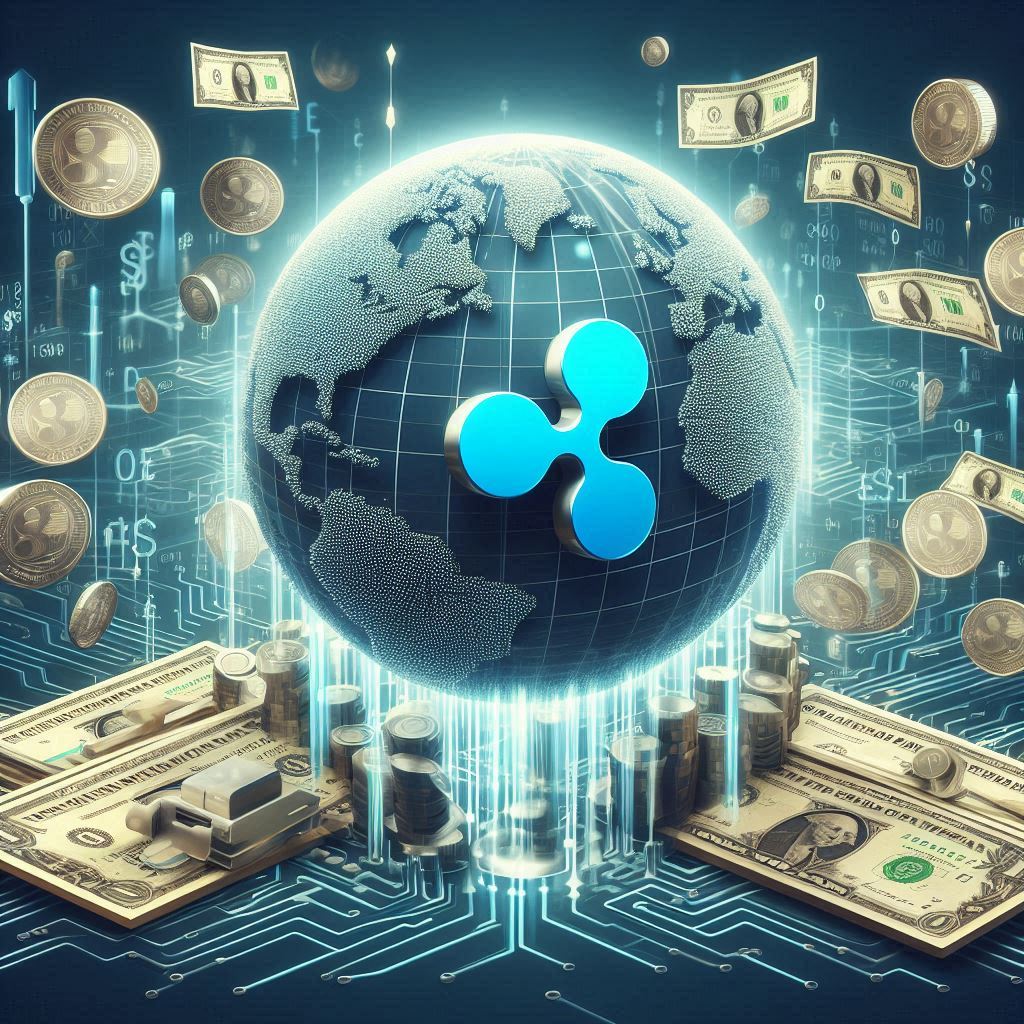“Ripple (XRP): Pioneering the Future of Global Payments and Financial Transactions”
In the dynamic landscape of blockchain and digital currencies, Ripple stands out for its focus on revolutionizing cross-border payments and financial transactions. Established in 2012 by Chris Larsen and Jed McCaleb, Ripple aims to address the inefficiencies and high costs associated with traditional banking systems. This article explores what Ripple (XRP) is, its unique features, and its role in transforming the global financial ecosystem.
Introduction to Ripple

Ripple is both a technology company and a digital currency platform designed to improve the speed and efficiency of financial transactions. The Ripple protocol facilitates instant, low-cost international payments through its network, aiming to streamline and modernize the traditional financial system. Ripple’s native digital currency, XRP, plays a central role within this ecosystem.
Key Features of Ripple (XRP)
1. Real-Time Gross Settlement System
Ripple operates as a Real-Time Gross Settlement System (RTGS), enabling the instantaneous transfer of funds between financial institutions. Unlike traditional banking systems that often involve multiple intermediaries and lengthy processing times, Ripple’s network allows for direct, real-time settlement of transactions. This innovation significantly reduces transaction times from days to mere seconds.
2. XRP Ledger
The XRP Ledger (XRPL) is the underlying blockchain technology that supports Ripple’s operations. It is designed for high performance and scalability, capable of handling thousands of transactions per second. The XRPL facilitates the efficient processing of transactions and supports the XRP currency, ensuring fast and reliable transfers.
3. Consensus Algorithm
Ripple utilizes a unique consensus algorithm called the Ripple Protocol Consensus Algorithm (RPCA). Unlike traditional Proof of Work (PoW) or Proof of Stake (PoS) mechanisms, RPCA relies on a network of trusted nodes, known as validators, to achieve consensus on transaction validity. This approach enables rapid transaction validation with lower energy consumption, enhancing the network’s efficiency and reducing costs.
4. Cross-Border Payment Network
Ripple’s primary objective is to streamline cross-border payments. Traditional international transactions often involve multiple intermediaries, each adding fees and causing delays. Ripple’s network offers a direct connection between financial institutions, eliminating the need for intermediaries and significantly lowering transaction costs. Ripple’s technology enables the seamless conversion of different currencies, facilitating efficient and cost-effective global transactions.
5. RippleNet
RippleNet is the global payment network built on Ripple’s technology. It connects banks, payment providers, and financial institutions worldwide, allowing them to transact directly with one another. RippleNet provides several benefits, including enhanced liquidity management, reduced transaction fees, and greater transparency in cross-border payments.
Use Cases and Applications
Ripple’s technology and XRP currency have various practical applications:
- Banking and Financial Institutions: Many banks and financial institutions use Ripple’s technology to enhance their payment systems. The ability to settle transactions in real-time and at a lower cost has made Ripple an attractive option for modernizing traditional banking services.
- Remittances: Ripple’s network is also utilized for remittances, where individuals send money across borders. The reduced fees and faster processing times offer significant advantages over traditional remittance services.
- Liquidity Provision: XRP serves as a bridge currency within Ripple’s network, facilitating liquidity and enabling efficient currency conversion. This feature helps financial institutions manage liquidity and conduct transactions smoothly.
Regulatory and Market Challenges
Ripple has faced regulatory scrutiny, particularly from the U.S. Securities and Exchange Commission (SEC), which has questioned whether XRP should be classified as a security. The outcome of these regulatory issues could impact Ripple’s operations and its role in the financial industry.
Future Prospects
Despite regulatory challenges, Ripple’s technology continues to gain traction in the financial world. The platform’s focus on improving cross-border payments and its growing network of financial institutions suggest a promising future. As Ripple continues to evolve and expand its offerings, it has the potential to play a significant role in reshaping the global financial landscape.
Conclusion
Ripple represents a major advancement in the world of financial technology with its innovative approach to cross-border payments and transactions. By leveraging the XRP Ledger and a unique consensus algorithm, Ripple offers a faster, more cost-effective solution to traditional banking inefficiencies. As Ripple navigates regulatory challenges and continues to expand its network, it is poised to make a lasting impact on the global financial ecosystem.

